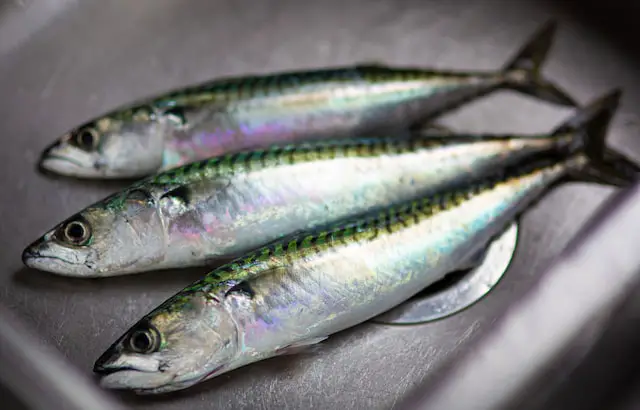
Many people view frog’s legs as an exotic delicacy although this type of food is rather popular in the Southern US states.
Should you feed your dog frog legs?
Yes, because frog meat is hypoallergenic and has a low fat content, while also being rich in minerals and vitamins.
While there are some concerns that frog legs might carry salmonella, this type of infection is actually rare in dogs.
You can feed your dog raw frog legs and you don’t really have to worry about the bones being a choking hazard.
What you should worry about is the costs, as frog legs are more expensive than regular meats.
What is the nutrition in frog legs?
Eating frog legs may sound a bit weird, if you don’t happen to be French or Chinese, but the fact is that this type of meat is in many ways better than the meat most of us are accustomed to – chicken, beef, pork, etc.
Also, frog meat is considered hypoallergenic, which is why it is highly-recommended for dogs with food allergies and skin problems.
It is also very nutritious, 100 g of frog legs provide 214 calories.
The best part is that it is a type of lean meat, with a low fat content. 100 g of frog leg meat contains 11 g of fat, or 14% of the Recommended Daily Allowance (RDA) for the average human.
That might sound a bit much for a small dog, especially as fat shouldn’t account for more than 10 – 15 % of your pet’s diet.
On the other hand, it’s not like you’re going to feed your dog frog legs every day, as they’re not that easy to come by.
If it’s going to be an occasional snack, then it’s perfectly fine and such a treat offers many health benefits.
Keep in mind that frog legs are rich in Omega-3 fatty acids, which play an important part in sustaining brain function and promoting skin health.
For instance frog legs are a good source of iron, 2.2 mg per 100 g, or 12% RDA. An adequate iron intake prevents anemia and helps build muscle mass.
Also, frog legs are rich in minerals, like calcium (4%), copper (29%) phosphorus (25%), zinc (11%), selenium (35%), magnesium (6%), etc.
Once again, these values refer to the average person’s RDA, and will represent much more in terms of percentages for a dog.
Frog legs also provide essential vitamins, especially those in the B group
Could frog leg bones be a choking hazard for a dog?
One of the main reasons pet owners might be reluctant to feed their dogs frog legs is that the bones could be a choking hazard.
This depends largely on your dog’s breed.
A large dog won’t have any trouble crunching the small bones in a frog’s leg. In fact, since they’re so small, most dogs won’t have a problem swallowing them.
At the same time, the frog legs you might find at the deli are usually dehydrated, so they won’t splinter like chicken bones, for instance.
All in all, there’s little risk that your dog will choke on frog leg bones.
Frog legs vs chicken legs
People say that frog legs taste very much like chicken, especially chicken wings, so no wonder your pet will keep asking for more.
On the other hand, since this delicacy tastes like chicken, why not feed your dog chicken legs, which are readily available and more affordable?
Let’s have a look at the nutritional values for chicken legs.
For one thing, they provide the same number of calories, 214 per 100g.
The fat content is just a bit higher in chicken legs, 13 g for 100 g.
Also, there’s a higher percentage of saturated fats in chicken legs, and the cholesterol is much higher. 135 mg in chicken legs vs 81 mg in frog legs.
Chicken legs provide more protein, 22.45 g vs 17.6 g in frog legs.
Chicken legs have only 1 mg of iron, half the iron content in frog legs. Also, they’re just as good a source of minerals and vitamins as frog legs.
Should dogs eat chicken bones?
Chicken meat is one of the best meats for dogs, but experts caution against feeding your pet chicken bones, which are a significant choking hazard.
Cooked chicken bones are particularly dangerous as they splinter easily.
Such a splinter might get lodged in your dog’s throat, and this is a medical emergency. At the same time, bone splinters can cause stomach lesions or they can puncture the intestines.
Such cases are fortunately rare as chicken bones are partly digested in the stomach so it’s unlikely that large fragments will make it to the intestines.
If you want to feed your dog chicken legs, serve them raw rather than cooked.
And, just to be safe, refrain from giving your dog table scraps.
Dogs do like bones, but give your pet large cow bones.
What other meats are as low in fat as frog legs?
Lean meats are much healthier for your dog, and it’s not just about preventing weight gain.
A diet rich in lean meats also protects the dog against pancreatitis and helps with digestion, resulting in regular bowel movements and well-formed stools.
Frog legs might not be the first choice for many pet parents, but you can easily find lean meats at your local store.
Chicken is best in terms of nutritional values and affordability, but make sure it is skinless. Turkey is a bit more expensive than chicken, but it has less fat, which makes it better for your dog’s needs.
Lamb is also a good choice as it is leaner than pork or beef, but not always readily available.
You might also include salmon in your dog’s diet, although it is relatively low in protein. Salmon has a high fat content, but it’s mostly Omega-3 fatty acids, which are very healthy.
Are frog legs easy and cheap to buy?
If your dog happens to develop a passion for frog legs, tell him he should get a job if he wants to keep snacking on this delicacy.
You might find frog legs at popular chain stores, like Target, but not on a regular basis.
There are pet stores that offer ‘novel protein’ like frog leg jerky, but at $17 for a measly 70 g snack, it’s not like you’re going to buy him that every day.
Other suppliers offer uncooked frog legs at $35 for 2 lbs. That’s $17.5 per pound, while for skinless and boneless chicken breast you only need to pay $2-5 per pound at Target.
The only alternative is to move to the Southern states, like Louisiana, where people in rural areas go frogging a few times per year.
Raw vs cooked frog legs
If you do happen to get some frog legs and want to share them with your faithful friend, it’s best to give him a raw snack.
There’s actually a lot of debate on this issue, as consuming or just handling raw meat of any kind increases the risks of salmonella poisoning.
The term salmonella refers to a group of bacteria that live in the intestines of many types of animals, including cows, pigs, chicken, reptiles and amphibians.
In humans, salmonellosis causes fever, vomiting, diarrhea, and can be very nasty, although treatable.
Dogs getting this foodborne illness will present similar symptoms, but according to the FDA, salmonella infections are quite rare in pets.
At most, dogs can be carriers and spread salmonella through feces or saliva, but they won’t get sick themselves.
There is, however, great concern that the international trade in frog legs might facilitate the spread of epizootic disease.
Some countries, like Canada, have very strict regulations on the sale of fresh or frozen frog legs.
The sale of frog legs that do not pass rigorous testing to be labeled salmonella-free is illegal in Canada.
What is the healthiest way of cooking frog legs?
If you’re making a gourmet meal and try a traditional French recipe, like sauteed frog legs, it’s not particularly unhealthy for your dog, but only if you leave out the garlic, which is considered toxic for canines.
As for Asian cuisine, the traditional Chinese stir-fry frog legs recipe might sound better, but it’s not. Stir-fry is a healthier method of cooking than deep fry, but the Chinese recipe calls for soy sauce, which has no place in your dog’s diet as it has a lot of salt.
Breaded frog legs aren’t much better as fried foods are high in fats.
Probably, the healthiest way you should cook frog legs is to bake them in the oven, using this simple recipe, but leaving out the seasoning.
A bit of butter should do.
Such a basic recipe allows the delicate chicken flavor of frog meat to take center stage, so your dog will have a feast.
Closing Thoughts
Undoubtedly, frog legs are a healthy treat for your dog, as they provide a lot of protein and have very little fat.
Frog legs are particularly recommended for dogs with food allergies. On the other hand, frog legs can be quite expensive and hard to find on the market.
If you cannot find such a treat in your area, don’t fret over it. Chicken meat is almost as good as frog legs, offering the same amount of protein, but having a slightly higher fat content.
Since frog legs have the same flavor and texture as chicken wings, give him those and tell him it’s frog. He won’t know the difference!





